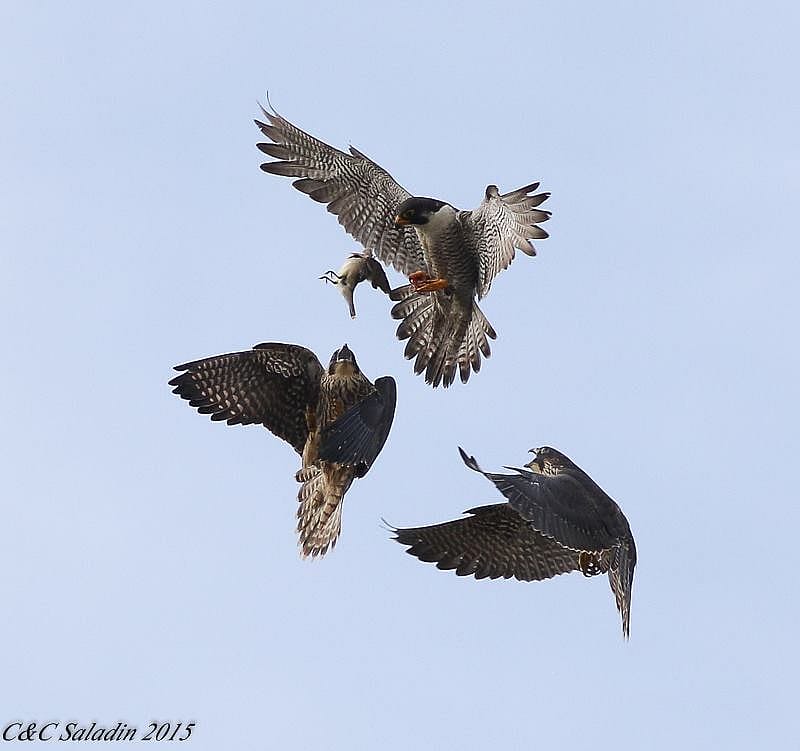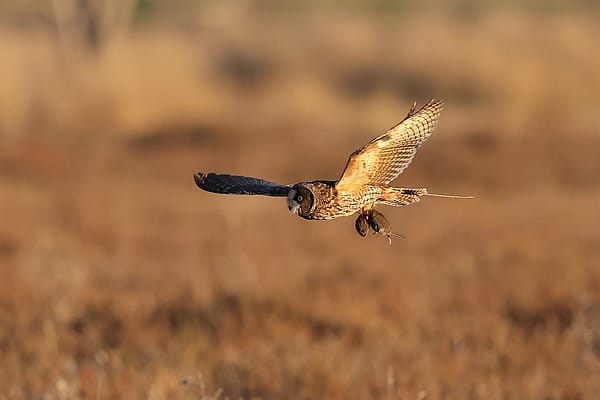
Gross and Interesting Facts About Peregrine Falcons
Most people who know me soon learn that falcons, especially Peregrine Falcons, are one of my favorite birds. Not only are they beautiful raptors, with their stream-lined bodies and long pointed wings, but they are also very interesting birds. In this blog I will address 4 facts that many people may find disturbing but also fascinating.
1) As I have noted in my previous blog, “My Favorite Interesting Facts About Peregrines,” https://centerofthewest.org/2013/10/25/my-favorite-interesting-facts-about-peregrine-falcons, a peregrine’s preferred way to make a kill is to use speedy dives. Then, while still in flight, either strike their prey with their feet or scrape the prey with open talons. According to Kate Davis’ book, Falcons of North America, the hits of peregrines and gyrfalcons have been known to knock the heads off ducks. She also reports that the their jaw muscles are so strong that the combination of these muscles and the sharp tomial tooth structure on the beak makes it possible for a peregrine or gyrfalcon to decapitate a bird in seconds, even in flight.

2) Though Peregrines commonly drop dead prey to their young fledglings, they have also been known to seize and release live pigeons, dropping them for their young to catch. This is probably done as part of the young bird’s training to be hunters – though not too fun for the pigeons.
3) A peregrine falcon can carry ½ its weight so at times they may need to make their kill lighter. They do this by removing one or both wings, the legs, and the head of the prey before carrying it to the nestlings.
4) Peregrines at times may be kleptoparasites (stealing prey caught by another bird). This is not uncommon among a number of other raptor species. I once observed this when I saw a loon come to the surface with a good sized fish. A bald eagle, who had been watching the loon from a near-by tree, dove toward the loon. As a result, this caused the loon to dive, leaving its fish behind. The fish was swiftly picked up by the eagle. Recently researchers in Yellowstone discovered fish in a Peregrine nest. The most likely explanation would be kleptoparasitism, the fish presumably stolen from an osprey.

Peregrine mantling prey © Jitze Couperus, Attribution 2.0 Generic Deed
Both photos of Hayabusa courtesy of author, Anne Hay. Hay.
Parent Dropping Prey to Young courtesy from C&C Saladin 2015 downloaded with permission.
Peregrine Falcon carrying prey courtesy from C&C Saladin 2015 downloaded with permission.
Written By
Anne Hay
Anne Hay has a Bachelor's degree in Elementary Education and a Master's in Computers in Education. She spent most of her working years teaching third grade at Livingston School in Cody, Wyoming. After retiring she began doing a variety of volunteer work for the Buffalo Bill Center of the West’s Draper Natural History Museum. Anne loves nature and has a concern for the environment. She believes that educating the public, so that they will have a better understanding and appreciation for the natural world, is very important. Because of this belief, volunteering at the Center is a perfect fit. She spends time in the Draper Lab, observing eagle nests for Dr. Charles Preston’s long-term research project on nesting golden eagles, writing observation reports of raptor sightings in the Bighorn Basin, and working with the Draper Museum Raptor Experience. Anne states that, “Having a bird on my glove, is one of my all time favorite things in life.”














